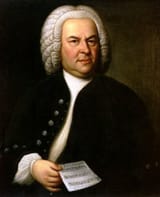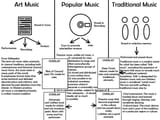>>126875419 (OP)
Quite simple, actually.
Music has various different sides that need to be addressed. Harmony is the most important, because its development allowed everything else to fall into place - melody, rhythm, form (structure), to some extent orchestration, timbre, technique etc.
Harmony, in simple words, is association between different pitches. A chord is harmony. There are many different types of chords but the they are all based on 3 fundamental triads - I, V and IV chords. These chords have their functions - their roles and how they should behave. To understand why and how those functions work, you'll have to study scales and voice leading first.
In a major scale (which was originally derived from harmonic overtones - which are collection of notes that can be heard when you play any single note on an instrument, by very careful listening) we have so-called "voice leading" rules, so which note can follow the next one (e.g. a leading-tone (7th note in scale) will have to resolve to tonic (8th note), because of its natural tendency). All those rules are completely natural and were discovered because they appeal to our auditory senses. All music you listen to more or less follows those rules. What's more, is that there are pure mathematical models which show how those notes resolve and why they resolve: in short, in an implied home key, let's say C major, the note B appears relatively late in overtone series of C, this makes it not "at rest" when heard in relation to C. So it "wants" to resolve to C. It's semitone apart from C.
From those rules(there are more), chord functions can be defined. Such as why V chord has natural tendency to resolve to I, because V chord contains the leading tone (7th note, B in C major).



